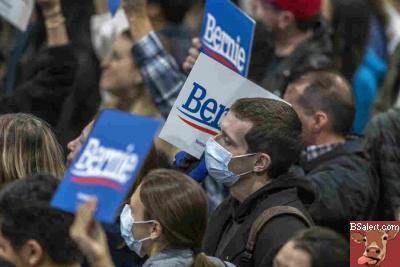|
|
The Bernie Sanders Youth Revolution Didnt Show Up For Super Tues
Posted by Pile
(25952 views) |
 [Activists] |
 #OKMillennials... #OKMillennials...It may be time to admit that young people's support does not automatically translate to young people's votes. | |
As we emerge from a gobsmacking Super Tuesday, 78-year-old Bernie Sanders continues to be the Youth Candidate. He won voters under 30 across the 14 states up for grabs on the Democratic primary's biggest night so far, often by outright majorities. But thus far, reports of a revolution have been greatly exaggerated. There is no evidence at this point that Sanders's core promise, that he will attract millions of new voters to the political process—particularly young and working-class people of color—to dramatically remake the Democratic coalition, will come to pass. It doesn't matter how much young people like you if they don't show up to vote. It's one of many reasons Joe Biden has risen from the dead. In Virginia, where the first signs of Biden's Lazarus act popped on the screen, voter turnout nearly doubled from the 2016 Democratic primary. 1.3 million votes were cast. This sounds like good news for Sanders, who wants to expand the Democratic electorate. Except just 13 percent of Virginia voters were under 30, according to USA Today, down from 16 percent four years ago. Sanders won 57 percent of them—down from 69 percent in 2016. Granted, that was just a two-horse race, but the larger issue here is that it looks like the lion's share of these new participators came to participate on Biden's behalf. He won 130 of 133 localities, and by 30 points overall. The trend continued across the southern states that solidified Biden's good night. In North Carolina, a state that, like Virginia, will figure significantly in November, the numbers were pretty much identical to VA: 13 percent of voters were under 30, down from 16 percent four years ago, and Sanders took 57 percent of them, down from 69 percent. In Alabama, only seven percent of voters were between 17 and 29, compared to 14 percent in 2016. (Sanders did up his chunk of that vote to 60 percent.) In Tennessee, just 11 percent were under 30, down from 15 percent four years earlier. In California, the cornerstone of Sanders's great western firewall, just 14 percent of voters were under 30, according to the Washington Post. Sanders won 57 percent of these folks, along with 52 percent of voters 30-to-44, on his way to winning the state. He also did better with older voters out West than anywhere else, nearly matching Biden with voters 45-to-64. He won white voters, Hispanic voters, and Asian voters, while Biden continued the strong performance with black voters that powered his surge throughout the nation. In the end, it was Sanders's inability to make inroads with black communities in South Carolina and throughout the South that has stripped him of the sole frontrunner status he enjoyed coming out of Nevada. The six-in-10 black voters who broke for Biden in Texas likely delivered him that state. This was the wall Sanders's campaign ran up against in 2016, and it does not look like his work over the years since has been as effective with these folks as it has been with Hispanic voters, with whom he has dominated this time around. Sanders is still very much in contention, but he's got to find a way to connect with the cornerstone of the Democratic base. To win, he'll have to build a more standard Democratic coalition. That's also true because this lack of revolutionary energy in the electorate is destructive to Sanders's general-election arguments. In the 2018 midterms, Democrats powered to control of the House of Representatives largely due to big gains in the suburbs. These are people, particularly relatively well-off white women, who are not particularly enamored with left policy but who are sick of the current leadership. There is ample reason to believe that Sanders would struggle in these areas. To make up the difference, he needs a massive turnout of new voters—young people of color, working-class voters who previously saw no reason to participate in politics—to essentially form a new Democratic coalition. Maybe these people are less inclined to participate in a primary than in a general election. Maybe if Sanders won the nomination, they'd come out for him in the kind of numbers he needs. But at the moment, there is little reason to believe this. On the other side of things, Joe Biden could thrive with exactly that kind of suburban voter. His whole campaign is geared towards The Trump Exhausted, as he prioritizes decency and healing and the prospect of not having to hear about the president's dumbass antics every day of your life. This is appealing to many, particularly the older, richer, whiter folks who most consistently vote. It is a safer bet, on paper, if Democrats want to hold their House majority. But the core question for Biden is whether he can generate the kind of enthusiasm that Hillary Clinton could not, when he is largely not promising any kind of transformational change beyond removing a blight on the republic from the White House. Can he attract working-class voters who think the economic system is rigged against them when he's promising to return things to the last years of the Obama era? | |
Details | |
| Survivor Posted by Tony Georgeson on 2024-04-19 12:13:27 |
| Hed have mine if he ran. |
| 1 Article displayed. |


 Bumper Sticker Store
Bumper Sticker Store



